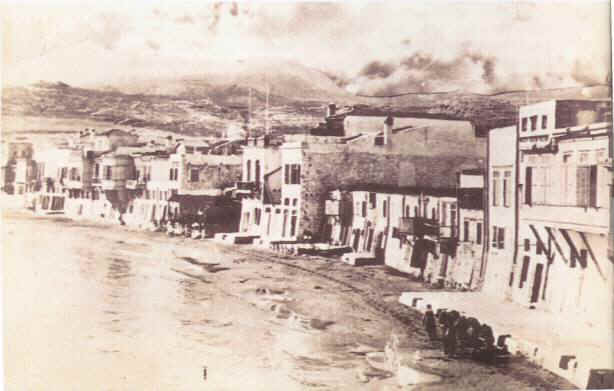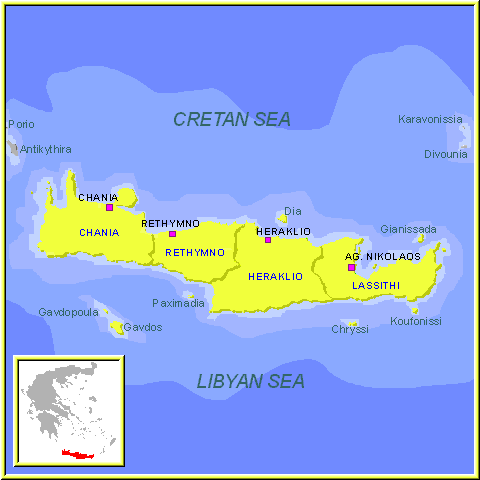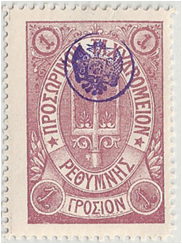ALBUM – view my Russian Occupation of Crete album
TRANSITION CHART – Crete
Fast Facts
Region: Aegean / Ionian Islands
Group: Crete
Classification: Military Occupation (Russian / International forces)
Prior Regime: The Ottoman Empire
Key Dates:
1896 – Rebellion on Crete against the Ottomans
1897 – Greek troops land on Crete
1897 – Multinational forces land on Crete
1898, Nov – Ottoman forces withdraw from Crete and multinational forces assume control
1905, Apr – Theriso Revolution, martial law declared, but it ultimately resulted in a proclaimation of unification with Greece
1909 – Multinational Forces withdraw
1913 – Unification with Greece recognized after the Balkan wars
Following Regime: Autonomous Crete, however it soon joined the Kingdom of Greece
Scott Catalogue: (Crete) #11-46
Pick Catalogue: none for the occupational forces.
Currency: 4 metallik = 1 grosion, (2 metallik = 1 piastre as an exchange rate)
History

In 1896 a rebellion against Ottoman rule erupted on the island of Crete, resulting in the Greco-Ottoman War of 1897 when Greek troops landed on Crete. The Protecting Powers (Britain, Russia, France, Italy, Germany and Austria-Hungary) imposed a blockade on Crete in 1897 and, following Ottoman approval, established control of the Island.
In April, 1898, Germany and Austria withdrew their ships, due to their interest in maintaining relationships with the Ottoman Empire, leaving the four remaining powers to negotiate a settlement.
An agreement was reached that Crete would be given autonomous status within the Ottoman Empire, but would be administered by Prince George of Greece, the second son of King George I, as High Commissioner. The Great Powers would continue to retain forces on the island to maintain order. Upon urging from the occupying powers, Ottoman forces withdrew from Crete in November of 1898 and all fighting ceased.
 The occupying forces divided Crete into four zones, in which the respective power was to guarantee the status quo. The the Russians controlled Rethymnon (Ρέθυμνο), the British controlled Heraklion (Ηράκλειο), the Italians controlled Chania (Χανιά), and the French controlled Lasithi (Λασίθι). Prince George of Greece was appointed High Commissioner of the Powers. The occupying powers issued stamps for their respective zones, although throughout the period of Cretan autonomy (1898-1908) Crete had its own currency and postage stamps.
The occupying forces divided Crete into four zones, in which the respective power was to guarantee the status quo. The the Russians controlled Rethymnon (Ρέθυμνο), the British controlled Heraklion (Ηράκλειο), the Italians controlled Chania (Χανιά), and the French controlled Lasithi (Λασίθι). Prince George of Greece was appointed High Commissioner of the Powers. The occupying powers issued stamps for their respective zones, although throughout the period of Cretan autonomy (1898-1908) Crete had its own currency and postage stamps.
With the eventual exodus of the majority of the Muslim population, the predominately Greek population favored unification with Greece. In April 1905 a coup (the Theriso Revolution) erupted, demanding reforms and a unification with Greece. The Powers reacted by declaring the act void and placing the island under martial law.
Eventually, on 15 Aug 1905, the regular assembly in Chania voted in favor of most of the reforms that the revolutionaries proposed. In a subsequent meeting with Venizelos, the leader of the Theriso revolution, the Great Powers’ consuls accepted the reforms which ended the revolt and resulted in the resignation of Prince George as High Commissioner.
In May, 1908, the occupying powers announced that they would gradually withdraw troops when order in Crete could be assured and Greek Gendarmerie slowly began to replace the foreign soldiers. Taking advantage of unrest in Constantinople, Cretan officials declared union with Greece on 9 Oct 1908. Of course Turkey protested, but not wanting to take sides, the nations of the Great Powers continued their withdrawal, which was completed in 1909. Crete’s unification with Greece was finally internationally recognized in 1913, after the Balkan Wars.
Stamps
 ALBUM
ALBUM
Before the arrival of multinational occupying forces in 1898, there was a rudimentary postal service between Crete and the mainland, and Ottoman stamps were used. After the occupation, each of the occupying powers issued stamps for the use of their troops and the civilian population in their area of control. Britain and Russia issued stamps inscribed in Greek, but France and Italy used stamps overprinted with the name of the island. Austria also had specially overprinted stamps for use in its POs on the island.
Russia issued postage stamps for its district of Rethymno in 1899, and the postal service operated only for a few months, from May to July.
A first set issued was a series of four stamps, hand-stamped, with two designs which contained the double headed eagle symbol of the Russian Empire. Shortly thereafter, regularly printed stamps were issued using a Poseidon’s trident design These issues came out in three different values, 1 metallik, 2 metallik and 1 grosion, and each denomination was issued in seven different colors (orange, green, yellow, rose, violet, blue and black). The stamps included a violet or blue hand-stamped control mark of a doubled headed eagle (although they are also known without the control mark).
A third set was issued, similar to the trident design, but included two stars in the frame around the trident. They were issued in the same denominations, and were printed in blue, rose, green and violet. All of these stamps have been extensively counterfeited.
Beginning 1 March, 1900, the Cretan government issued its own stamps.
Banknotes
While occupational forces didn’t issue banknotes, the Bank of Crete was founded in 1899 and had the exclusive privilege of issuing banknotes in the island of Crete. Two denominatons were issued (25 and 100 drachmas) and have the dates from 1901 to 1919. The first issued banknotes had handwritten dates and were printed by Bradbury Wilkiinson & Co. Ltd. Bank of Crete was merged with National bank of Greece in 1919.
Links
VIDEO – Ottoman War of 1897
The Union of Crete with Greece
The Cretan Question
Russian Post Offices in Crete – Wikipedia




